Posted On : 13-May-2021

Parents might experience stress pertaining to various aspects of the outbreak, such as concerns about the economy, jobs, contracting illness and an uncertain future. Adding to these stressors, parents are also likely to face conditions such as working from home, managing house hold chores and caring for the well-being of young children. All without the social support that was previously available to them. Call us for Online/Offline Homoeopathic Treatment - 8743859744
Posted On : 24-January-2021
.jpg)
Abstract: Pain is a sensation which leads patient to come to physician for relief which leads physician to do a diagnosis and it also caused by pathological changes and some damage. In this article we will get to know what is the role of homeopathy to treat pain and cure disease that is causing pain. Introduction: Pain management is universally understood as signal of disease, it is the most common symptom for patient to get into physician’s attention. Definition of Pain: “Pain is an unpleasant sensation localized to a part of the body. It is often described in terms of a penetrating or tissue destructive process (eg. Stabbing, burning, twisting, tearing, squeezing) or a bodily or emotional reaction (eg. Terrifying, nauseating, sickening).” Classification of Pain on the basis of duration: 1. Acute Pain 2. Chronic Pain Acute Pain: Acute Pain is characterized by sudden onset with specific cause like Injury, surgery, burns, cuts, labor and childbirth and goes away when there is no longer cause. It is associated with behavioral arousal and a stress response consisting of increased blood pressure, heart rate, pupil diameter and plasma cortisol level and also muscle contraction eg. Limb flexion, abdominal wall rigidity is often seen. Chronic Pain: Pain usually long lasting for more than 6 months. It can be continuing after injury which is healed but pain signals remain active in nervous system for weeks, months or years. Common Diseases linked with Chronic Pain: Headache Arthritis Cancer Nerve pain and etc. Classification of pain according to damage: Nociceptive Pain = Occur after tissue damage Neuropathic Pain = Occur after nerve damage. Treatment: There is excellent role of Homeopathic remedies in management of both acute and chronic pain. After thoroughly case taking of the patient as per Dr. Hahnemann’s Organon of Medicine we can permanently cure both acute and chronic pain. Common Homeopathic Remedies which can be used frequently: Arnica: Medicine for Injury Character of Pain: Sore, lame, bruised feeling. Sharp, pinching. Gout- Great fear to be touched with pain in back and limbs as if beaten. Sprained or dislocating feeling. Soreness after over exertion, can’t walk. Neuralgia, crushing pain. Bed feels too hard. Agg- < Touch, motion. Amel- > Lying down with head low Bellis Per- Medicine for Stasis and Varicose Veins Character of pain: Sprain, bruised, soreness. Stasis and Fatigue are principle symptoms. Deep tissue injury, Venous Stasis, varicose veins with bruised and sore feeling. Railway spine, rheumatism of old laborers, hip pain worse on exertion and boils. Agg- < Injury, blows and sprains, left side, touch, cold bath and cold drinks. Amel- > continued motion and pressure. Bryonia Alba- Character of pain- Brushing, Sharp Pain, stitching, going backward, tearing, splitting, & brushing headache. When Arnica fail in injury of joints, sprained red swollen, hot joints, ankle or knees injury. Slip disk with sharp pain and stiffness in lumber pain, vertebrae out of place causing much pain and immobility. Agg- < Motion, Room, Anger, touch. Amel- > Rest, Pressure, warmth, lying, painful side, cold things, cool open air. Belladonna- Medicine for Inflammation. Character of Pain- Spasm, jerks, shock, twitching, constriction with throbbing, sharp, cutting, shooting. Curvature of Lumber Vertebrae with cramping pain of limbs and cold limbs, joints swollen, red, shining, with red streaks Agg- < Heat, checked sweat, 3 PM, 11 PM after midnight. Amel- > Warm room, wrapping up, bending backward. Calc Carb- Abscess in deep muscles, tendency of straining easily. OPEN FRONTANELLES. Lumber rheumatism. Trembling with weakness, cramps in calves, soles raw, feet feel cold and dead in night, weakness of ankles. Agg- < Bathing, working in water, open cold raw air, midnight. Amel- > warm room, wrapping up, bending backward. Calc Phos- TONIC OF BONES. Osteoporosis, Osteomyelitis Backache with menses Curvature of spine to left, Violent pain, slow ossification, delayed healing of broken bones, growing pain, rickets, Paget’s Disease, osteogenesis imperfecta, Rheumatism in cold weather. Agg- < Mental exertion, weather changes, symptoms agg. when thinking of symptoms, motion, winter/ cold weather. Amel- > Summer, rest, lying down on abdomen. Hypericum- Anti-Tetanus and Medicine for Nerve Injury Character of Pain- Lacerating, shooting pain, spasms, Violent sharp pain. Nerve injury, punctured wounds, infected wounds, animals and insects bite, crushing fingertips. Anti- tetanus, tailbone pain from injury, pressure over sacrum, amputation pain, post-surgery pain. Violent pain and inability to walk or stoop after a fall on coccyx, crawling in hands and feets. Agg- < Injury Punctures, post-surgery, touch, pressure. Amel- > lying quietly. Ledum Pal- Medicine for Punctured Wounds Gouty Pains shoots whole limb especially small joints. Rheumatism begins in lower limbs and ascends (Kalm- opposite). Sole painful, can hardly step on them. Coldness of affected parts. Agg- < Injury, motion Amel- > Ice apply, bathing, cold air Rhododendron- Character of pain- symptoms agg. on approach of storm, tearing as weight hanging to feet. Pt will say when he feels pain, he will know thunderstorm is coming. Rheumatic and tearing pain, can’t sleep needs to cross legs. Agg- < Before storm, rough weather, heat, getting wet and catching cold. Rhus Tox- Character of Pain- Tearing, shooting, stitching Stiffness of all joints, cracking of joints when stretching. Tearing pain in tendons, ligament & tissues. Sciatica, numbness & prickling in limbs after overwork & exposure to damp. Ankles and knees are swollen, stiff after sprain and & injury. Back sprain after over lifting. Backache compelling him to move constantly in bed. Agg- < Night, cold, damp season, first motion. Amel- > Warmth, motion, massage, lying on something hard. Ruta- Medicine for Injured joints and Tendonitis. Character of Pain- Sore, aching with restlessness with bruishness of flexor tendons, lameness after sprains. Hamstrings feel shortened (Graph.). Thighs feel broken, knee buckling while ascending and descending stairs. Ganglion on wrist (Benz-ac, Calc flour). Agg- < Overexertion, lifting sprain. Amel- > Pressure, lying on back, warmth, motion. Symphytum- Medicine for fracture with pricking pain. Character of pain- Pricking, stitching pain with pain in bony protuberances, elbow, epicondyles, ankles. Non-union of fracture of bones and injury to periosteum. PSOAS ABSCESS Agg- < Injury. And there are many other remedies which can be used to treat pain after thorough case taking and individualization of case of disease. Bibliography: Harrison’s Principles of Internal Medicine- Vol. 1 International 14th Edition Acute vs Chronic Pain [internet] Revised by Cleveland Clinic Medical Professional on 26/01/2017. Available- https://my.clevelandclinic.org/health/articles/10521-acute-vs-chronic-pain Murphy Robin, Lotus Materia Medica 3rd Edition. Dubey S. K.; Textbook of Materia Medica. Reprint- Jan 2010. Kent J. T.; Lectures of Materia Medica 14th Impression.
Posted On : 20-January-2021

A fungal infection, also called mycosis, is a skin disease caused by a fungus. There are millions of species of fungi. They live in the dirt, on plants, on household surfaces, and on your skin. Sometimes, they can lead to skin problems like rashes or bumps. Fungi are microorganisms characterized by a substance in their cell walls called chitin. Some fungi, like many types of mushrooms, are edible. Other types of fungi, like aspergillus, can be extremely dangerous and lead to life-threatening diseases. Different types of fungi can cause fungal infections. In some cases, fungi that aren’t typically found on or inside your body can colonize it and cause an infection. In other cases, fungi that are normally present on or inside your body can multiply out of control and cause an infection. Fungal infections can be contagious. They can spread from one person to another. In some cases, you can also catch disease-causing fungi from infected animals or contaminated soil or surfaces. If you develop signs or symptoms of a fungal infection, make an appointment with your doctor. Common types A fungal infection is also known as mycosis. Although most fungi are harmless to humans, some of them are capable of causing diseases under specific conditions. Fungi reproduce by releasing spores that can be picked up by direct contact or even inhaled. That’s why fungal infections are most likely to affect your skin, nails, or lungs. Fungi can also penetrate your skin, affect your organs, and cause a body-wide systemic infection. Some common types of fungal infection include: • athlete’s foot • jock itch • ringworm • yeast infection • Onychomycosis or a fungal infection of the nail Some types of fungi don’t normally cause infections in humans but can cause sickness in people with weakened immune systems. These are called opportunistic infections. Athlete’s foot Athlete’s foot is also known as tinea pedis. It’s a type of fungal infection that can affect the skin on your feet, as well as your hands and nails. The infection is caused by dermatophytes, a group of fungi that can thrive in the warm and humid areas between your toes. It’s particularly common among athletes and can spread from one person to another. You can also catch it from contaminated surfaces, like a public shower or locker room floors. Symptoms Athlete’s foot can cause an itching, stinging, or burning sensation between your toes or on other parts of your foot. Your skin might also crack, peel, or blister. Diagnosis Your doctor may recognize athlete’s foot by looking at the symptoms on your skin. If the doctor isn’t sure, a small area of the skin can be scraped off and tested for the fungus.
Posted On : 02-January-2021

We all are fearsome at some point of life since childhood. We are afraid of exams, punishments, career etc.. which is a natural response. Fearing is good for your growth to succeed. Apprehension motivates you to perform best in life. But some people have unusual fears what we call phobias in psychiatry. Individual's mental health is found affected in such cases. People under stressful & unmanageable conditions develop PHOBIAS or fear. Emotional balance is lost. Their mind's ability to cognition tend to perceive any object as harmful to them and in response consider it as fearsome. This becomes exaggerated in form of phobias. Several types of phobias are presented below: ✳️Aerophobia= Fear of height. ✳️Agoraphobia= fear of open places. ✳️Algophobia/Dynophobia= fear of pain. ✳️Accousticophobia= Fear of noise. ✳️Androphobia= Fear of men. ✳️Gynaecophobia= Fear of women. ✳️Anthrophobia= Fear of flowers. ✳️Anglophobia= fear of English and English related things. ✳️Xenophobia= Fear of anything stranger or foreign. ✳️Arachnophobia= Fear of spiders. ✳️Cacophobia= Fear of ugliness ✳️Carcinophobia= Fear of cancer. ✳Chromophobia= Fear of colour. ✳️Claustrophobia= Fear of closed place. ✳️Demophobia= Fear of people. ✳️Enchlophobia= Fear of crowd. ✳️Gametophobia= Fear of marriage. ✳️Haematophobia= Fear of blood. ✳️Helminthophobia= Fear of insects. ✳️Hippophobia= Fear of horses. ✳️Hydrophobia= Fear of water. ✳️Kinesophobia= Fear of speed. ✳️Logophobia= Fear of studies. ✳️Metrophobia= Fear of motherhood ✳️Monophobia= Fear of loneliness. ✳️Neophobia= Fear of changes. ✳️Noctiphobia= Fear of night. ✳️Ophidiophobia= Fear of snakes. ✳️Pathophobia= Fear of diseases. ✳️Pedophobia= Fear of child. ✳️Peniophobia= Fear of poverty or penury. ✳️Sitophobia= Fear of food. ✳️Toxicophobia= Fear of poison. ✳️Zoophobia= Fear of animals ✳️Bibliophobia=Fear of books If you suffer from any type of phobias, anxiety etc... Book your appointment at Mission Chronic Cure and talk to me.
Posted On : 31-December-2020

We all are fearsome at some point of life since childhood. We are afraid of exams, punishments, career etc.. which is a natural response. Fearing is good for your growth to succeed. Apprehension motivates you to perform best in life. But some people have unusual fears what we call phobias in psychiatry. Individual's mental health is found affected in such cases. People under stressful & unmanageable conditions develop PHOBIAS or fear. Emotional balance is lost. Their mind's ability to cognition tend to perceive any object as harmful to them and in response consider it as fearsome. This becomes exaggerated in form of phobias. Several types of phobias are presented below: ✳️Aerophobia= Fear of height. ✳️Agoraphobia= fear of open places. ✳️Algophobia/Dynophobia= fear of pain. ✳️Accousticophobia= Fear of noise. ✳️Androphobia= Fear of men. ✳️Gynaecophobia= Fear of women. ✳️Anthrophobia= Fear of flowers. ✳️Anglophobia= fear of English and English related things. ✳️Xenophobia= Fear of anything stranger or foreign. ✳️Arachnophobia= Fear of spiders. ✳️Cacophobia= Fear of ugliness ✳️Carcinophobia= Fear of cancer. ✳Chromophobia= Fear of colour. ✳️Claustrophobia= Fear of closed place. ✳️Demophobia= Fear of people. ✳️Enchlophobia= Fear of crowd. ✳️Gametophobia= Fear of marriage. ✳️Haematophobia= Fear of blood. ✳️Helminthophobia= Fear of insects. ✳️Hippophobia= Fear of horses. ✳️Hydrophobia= Fear of water. ✳️Kinesophobia= Fear of speed. ✳️Logophobia= Fear of studies. ✳️Metrophobia= Fear of motherhood ✳️Monophobia= Fear of loneliness. ✳️Neophobia= Fear of changes. ✳️Noctiphobia= Fear of night. ✳️Ophidiophobia= Fear of snakes. ✳️Pathophobia= Fear of diseases. ✳️Pedophobia= Fear of child. ✳️Peniophobia= Fear of poverty or penury. ✳️Sitophobia= Fear of food. ✳️Toxicophobia= Fear of poison. ✳️Zoophobia= Fear of animals ✳️Bibliophobia=Fear of books If you suffer from any type of phobias, anxiety etc... Book your appointment at Mission Chronic Cure and talk to me for homoeoepathic treatment
Posted On : 18-December-2020

Almost all diseases/conditions that make your body their home during the winters are a result of your immune system not functioning at its peak. The reason for this is low humidity level in the environment during the colder months, which makes it easier for viruses to multiply. Therefore many people prefer staying indoors with closed windows and doors, to protect themselves from the cold. Because if you are affected by flu-cold, coryza, Fever, lethargy, body aches and other health problems follows. Here are some heath advice for winters to enjoy and be flu-free. 1. Wear warm clothes 2. Start the day with herbal drink It has health benefits- • Boosts immunity so that you don’t catch a cold. • Keeps your heart healthy. • Keeps your blood sugar and pressure steady. • Provides you with energy throughout the day. 3. Take a warm bath Because steam rising from warm water clears your airways and lungs. This relieves the symptoms of respiratory problems such as a common cold. 4. Exercise daily& workout Exercising improves blood circulation and strengthens your immune system. Also it build stronger muscles and keep your body warm and when you work out in winters, your body burns calories and heat is produced which makes gives body warmth. 5. Moisturize your skin 6. Drink plenty of water to keep yourself hydrated. 7.Fruits and Vegetables Seasonal Fruits like oranges and amla are rich in Vitamin C that provides a boost to the immune system and protects the body from diseases. 8. Sufficient Sleep An average adult requires at least 7-8 hours of sleep each day which is a must to have to be actively healthy. 7) Go Outdoors more often with Friends and Family For many, winter is a time when they feel lonely and depressed. Staying indoors all by themselves along with the cold weather can induce anxiety in you. Hence going out on picnics will help it. 9) Eat Healthy Eating green leafy veggies improves health status of the body in winters. 10. Assess Your Heart Health Ask your doctor to measure your personal health numbers and tell you the results: blood pressure, height, weight, waist circumference, blood cholesterol, and fasting blood glucose. Despite good healthy routine, if you fall sick. got cold-coryza, fever, coughing etc. or either and have TENDENCY TO CATCH COLD EASILY (low susceptibility)- BOOK APPOINTMENT at MISSION CHRONIC CURE and find permanent solution to them all.
Posted On : 15-December-2020

WHAT’S ALLERGY ? On exposure to various foreign substances viz., pollens , animal dander, latex, certain food items, dust mites etc. our body produces varieties of responses immediately so as to combat its bad effects that may at times be life threatening. These responses are manifested as sneezing, coughing, running nose, watery eyes, diarrhoea, vomiting, skin eruptions etc. Such type of reaction of an individual’s immune system to substances in environment that are usually harmless is termed allergy. And the substances are known as allergens. The term allergy was defined by Clemens Von Perquet as “an altered capacity of the body to react to a foreign substance”. It’s one of a type of immune responses that are termed hypersensitivity reactions. It produces immunological tissue injury. There are four types of hypersensitivity reactions classified by Coombs& Gell. Allergy comes in Type I Hypersensitivity mediated by IgE antibodies. WHAT CAUSES ALLERGIC REACTIONS When a person comes in contact with an allergen, our body’s immune system recognize the allergen as foreign substance & gets ready to attack. On first contact to allergens(antigen) immune system commences production of antibodies called IgE(Immunoglobulin E. The antibodies so formed bind to Fc receptors present on surface of mast cells & basophils. Second contact with the same antigen, IgE antibodies on surface of mast cells –basophils get firmly attached to Fc receptors & causes membrane lysis, influx of sodium & water& degnanulation of mastcells-basophils. Released granules contain Histamine, Serotonin, Leucotriene B4 & D4 , Prostaglandin ( Thromboxane A2, PGA2, PGE2), Chemotactic factors of Anaphylaxis for neutrophils & eosinophils, Platelet activating factor. These mediators leads to: a)Increased smooth muscle contraction + peripheral vasodilatation+ increases vascular permeability b) shock c) Extravasation of capillary( Erythema) d)Fluid shift into interstitial space( Edema) e) Increases nasal secretion f) increased lacrimal secretion g)Pruritus( itching) h) Eosinophils & Neutrophils spread to site of injury – Eosonophilia & Neutrophilia TYPES OF ALLERGIC REACTIONS Syndrome Common allergens Route of entry Response Systemic anaphylaxis Drugs Serum Venoms Intravenous or oral absorption into blood Edema Increased vascular permeability Tracheal occlusion Bronchospasm Circulatory collapse Death Urticaria (cutaneous anaphylaxis) Insect bites Subcutaneous Congestion & increased vascular permeability Allergic rhinitis(Hay fever) Pollen Dust mites Inhalation Edema of nasal mucosa with irritation Mucus secretion Asthma Animal dander Dust Inhalation Bronchial constriction Increased mucus production Inflammation of airway Food allergy Pea nuts Shell fish Milk Eggs Fish Oral Vomiting Diarrhoea Pruritis Urticaria Anaphylaxis Latex allergy Natural rubber latex Contact with proteins found in natural latex rubber Itching Erythema Congestion Dermatitis (Eczema) Detergents Jewelry Soaps Fragrances Cosmetics On contact with a certain substance Skin rash Itching Papules Fissures
Posted On : 05-December-2020

Blood pressure is the pressure that blood exerts onto the wall of the arteries. It's this pressure that decides up your functioning. Sometimes you can be low on blood pressure with symptoms like dullness, dizziness, drowsiness, vertigo. Along with there's decreased oxidation to cells making functioning weak and slow. At times mood swings occur in association with anxiety and stress in hypotension. The body can go in hypoglycaemic state due to decreased sugar level. Sometimes your count can increase up too & blood pressure may shoot under stressful conditions & in anger. It can go up specifically in winters due to contraction of the artery leading to stroke, sudden heart attacks, severe headaches, vertigo with accompanying symptoms like nausea, vomiting. The normal count is 120/80mmHg. Amy deviation from this require health care professional's help and individuals with any such mentioned symptoms must sought a doctor for BP checkup and take medications. For consultations- Book an appointment with Mission Chronic Cure.
Posted On : 23-November-2020
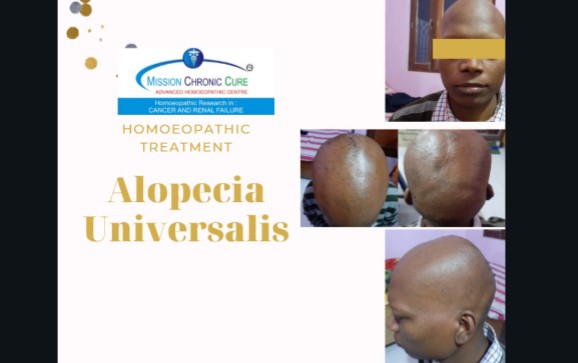
Alopecia universalis (AU), also known as alopecia areata universalis, is a medical condition involving the loss of all body hair, including eyebrows, eyelashes, chest hair, armpit hair, and pubic hair. It is the most severe form of alopecia areata. Causes and risk factors for alopecia universalis The exact cause of AU is unknown. Doctors believe certain factors may increase the risk for this type of hair loss. AU is an autoimmune disease. This is when the body’s immune system attacks its own cells. In the case of alopecia, the immune system mistakes hair follicles for an invader. The immune system attacks hair follicles as a defense mechanism, which triggers hair loss. Why some people develop autoimmune diseases while others don’t isn’t clear. However, AU can run in families. If others in your family also develop this condition, there could be a genetic connection. People with alopecia areata may have a higher risk for other autoimmune diseases, such as vitiligo and thyroid disease. Stress may also trigger the onset of AU, although more research is needed to support this theory.
Posted On : 13-November-2020
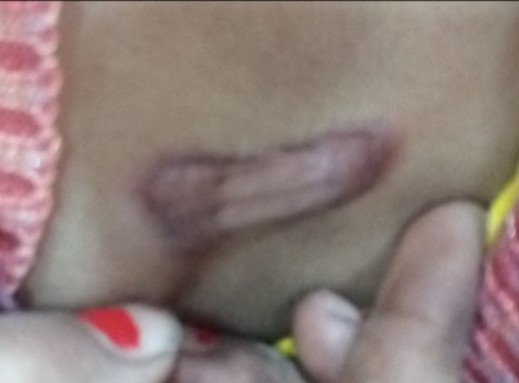
Keloids are a type of raised scar. They occur where the skin has healed after an injury. They can grow to be much larger than the original injury that caused the scar. They are not at all common, but are more likely for people who have dark skin. Anything that can cause a scar can cause a keloid. Keloids can be effectively treated with Homeopathic remedies. The Homeopathic treatment for keloids is based on natural medicines which are absolutely free from side effects. The time taken to completely treat Keloids with Homeopathic remedies varies from case to case, depending upon the size and duration of the presence of the firm growth on the skin.
Posted On : 10-November-2020

As we are here, it is evident that you already know about homoeopathy this much that you want to give it a try. When you first start your treatment with homoeopathic medicines you should always remember that it is the most safest and gentle form of removing the disease from your system. Disease is nothing but the derangement of the normal functioning of the healthy system of our body. When you take a homoeopathic medicines it enhances your immune system and give your body a kick start to fight back against the foreign invasion in your body. The homoeopathic medicines contain the dynamic powers to agitate the immune system of your body for good. In such a process the body doesn't get dependant on the medicines to fight against the diseases. Hence homoeopathy is one of the best thing you can choose when you are sick to aid the system and be a helping hand. If you or a loved one has Health related problems, suggesting Mission Chronic Cure (Advanced Homoeopathic Centre) at 8743859744 to schedule an appointment soon.
Posted On : 07-November-2020

It is commonly found, every 3rd female having this problem. In modern medicines there is no permanent treatment but in homoeopathy we offer safe, gentle and permanent cure. Why homoeopathy? Reason is very simple we treat a person as a whole. We include physical and psychological symptoms into consideration before prescribing medicines. PCOS/ PCOD is usually associated with disturbed personal life, it may be suppressed anger, performance anxiety, social fear, disappointment in love, jealousy, failure feeling alone etc. There are different reaction of different people in same situation. We in homoeopathy consider that and prescribe on individualistic approach. We treat body and mind simultaneously and only in that way we can achieve complete and permanent cure. Why us? We have vast experience of treating such cases. We do counselling also which is very essential to learn how to cop up in modern competitive and fast life. During first consultation we do a detail case study which include detail psychoanalysis along with physical symptoms. If you or a loved one has PCOD, suggesting Mission Chronic Cure (Advanced Homoeopathic Centre) at 8743859744 to schedule an appointment soon.
Posted On : 31-October-2020
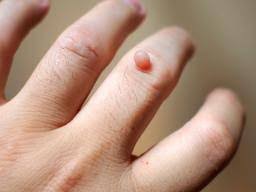
Warts are skin growths that are caused by the human papillomavirus (HPV). There are more than 60 kinds of HPV, some of which tend to cause warts on the skin. HPV stimulates quick growth of cells on the skin's outer layer. In most cases, common warts appear on the fingers, near the fingernails, or on the hands. What are the types of warts? There are five major types of warts. Each type appears on a different part of the body and has a distinct appearance. Common warts Common warts usually grow on your fingers and toes, but can appear elsewhere. They have a rough, grainy appearance and a rounded top. Common warts are grayer than the surrounding skin. Plantar warts Plantar warts grow on the soles of the feet. Unlike other warts, plantar warts grow into your skin, not out of it. You can tell if you have a plantar wart if you notice what appears to be a small hole in the bottom of your foot that is surrounded by hardened skin. Plantar warts can make walking uncomfortable. Flat warts Flat warts usually grow on the face, thighs, or arms. They are small and not immediately noticeable. Flat warts have a flat top, as if they’ve been scraped. They can be pink, brownish, or slightly yellow. Filiform warts Filiform warts grow around your mouth or nose and sometimes on your neck or under your chin. They are small and shaped like a tiny flap or tag of skin. Filiform warts are the same color as your skin. Periungual warts Periungual warts grow under and around the toenails and fingernails. They can be painful and affect nail growth. Homoeopathic role in Warts Treatment Warts are the growth of skin resulting from human papillomavirus infection. These may be single, multiple, smooth, or cauliflower-like and are generally treated by applying medicine externally or surgical excision procedure. Homoeopathy has a major role in the treatment of warts and most of the homoeopathic doctors use medicine in centesimal potencies. Cases treated with fifty millesimal potencies responded more quickly than centesimal potencies without aggravating the complaints and without applying any external medicines. There is a possibility that fifty millesimal potencies have higher beneficial effects, in the treatment of warts, which can be explored further. IF YOU OR A LOVED ONE HAS Warts suggesting MISSION CHRONIC CURE (Advanced Homoeopathic Centre) and schedule an appointment soon.
Posted On : 30-October-2020
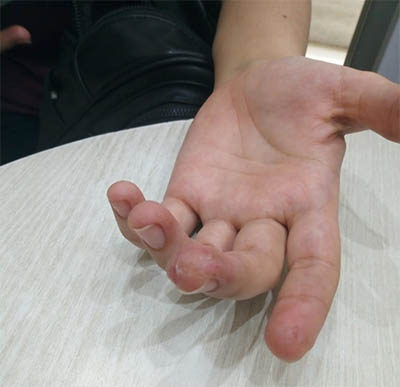
Psoriasis is thought to be an immune system problem. Triggers include infections, stress and cold. The most common symptom is a rash on the skin, but sometimes the rash involves the nails or joints. Treatment aims to remove scales and stop skin cells from growing so quickly. Topical ointments, light therapy and medication can offer relief. Psoriasis is a skin disorder that causes skin cells to multiply up to 10 times faster than normal. This makes the skin build up into bumpy red patches covered with white scales. They can grow anywhere, but most appear on the scalp, elbows, knees, and lower back. Psoriasis can't be passed from person to person. It does sometimes happen in members of the same family. Psoriasis usually appears in early adulthood. For most people, it affects just a few areas. In severe cases, psoriasis can cover large parts of the body. The patches can heal and then come back throughout a person's life Symptoms The symptoms of psoriasis vary depending on the type you have. Some common symptoms for plaque psoriasis -- the most common variety of the condition -- include: Plaques of red skin, often covered with silver-colored scales. These plaques may be itchy and painful, and they sometimes crack and bleed. In severe cases, the plaques will grow and merge, covering large areas. Disorders of the fingernails and toenails, including discoloration and pitting of the nails. The nails may also crumble or detach from the nail bed. Plaques of scales or crust on the scalp. People with psoriasis can also get a type of arthritis called psoriatic arthritis. It causes pain and swelling in the joints. The National Psoriasis Foundation estimates that between 10% to 30% of people with psoriasis also have psoriatic arthritis. Types Other types of psoriasis include: Pustular psoriasis , which causes red and scaly skin with tiny pustules on the palms of the hands and soles of the feet. Guttate psoriasis , which often starts in childhood or young adulthood, causes small, red spots, mainly on the torso and limbs. Triggers may be respiratory infections, strep throat, tonsillitis, stress, injury to the skin, and taking antimalarial and beta-blocker medications. Inverse psoriasis , which makes bright red, shiny lesions that appear in skin folds, such as the armpits, groin, and under the breasts. Erythrodermic psoriasis , which causes fiery redness of the skin and shedding of scales in sheets. It's triggered by severe sunburn, infections, certain medications, and stopping some kinds of psoriasis treatment. It needs to be treated immediately because it can lead to severe illness. What Causes Psoriasis? No one knows the exact cause of psoriasis, but experts believe that it’s a combination of things. Something wrong with the immune system causes inflammation, triggering new skin cells to form too quickly. Normally, skin cells are replaced every 10 to 30 days. With psoriasis, new cells grow every 3 to 4 days. The buildup of old cells being replaced by new ones creates those silver scales. Psoriasis tends to run in families, but it may be skip generations. For instance, a grandfather and his grandson may be affected, but not the child's mother. Things that can trigger an outbreak of psoriasis include: Cuts, scrapes, or surgery Emotional stress Strep infections Medications, including Blood pressure medications (like beta-blockers) Hydroxychloroquine, antimalarial medication Diagnosis Physical exam. It’s usually easy for your doctor to diagnose psoriasis, especially if you have plaques on areas such as your: Scalp Ears Elbows Knees Belly button Nails If you or a loved one has Psoriasis suggesting Mission Chronic Cure (Advanced Homoeopathic Centre) at 8743859744 to schedule an appointment soon.
Posted On : 30-October-2020
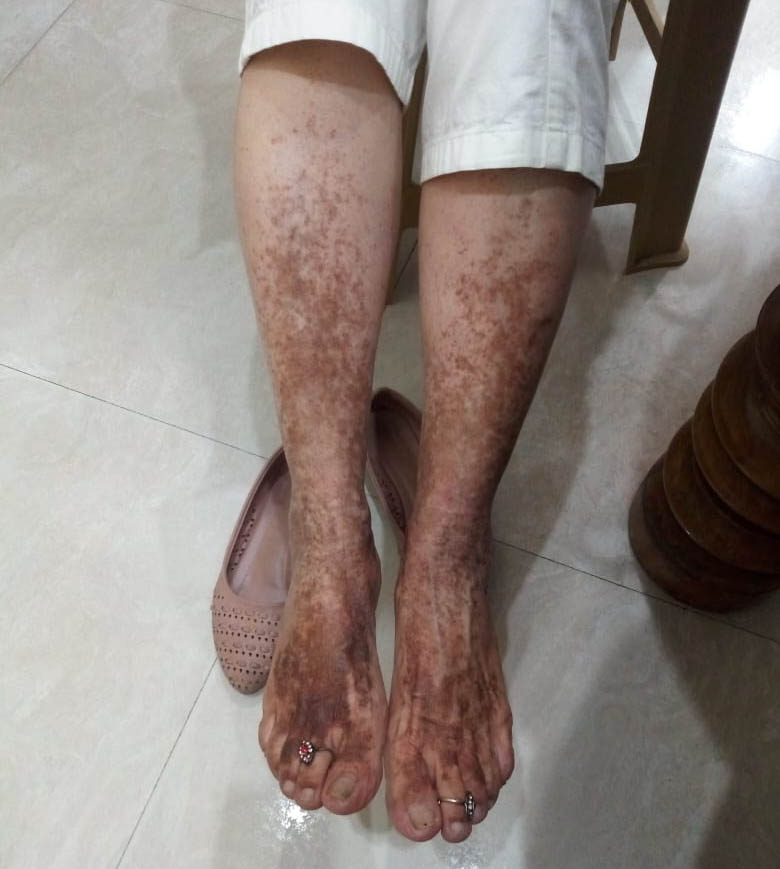
Stasis dermatitis is a long-term condition that causes inflammation, ulcers, and itchy skin on the lower legs. It often occurs in people who have underlying conditions that affect blood flow in the legs, such as chronic venous insufficiency, varicose veins, deep vein thrombosis (DVT), and congestive heart failure. Some patients develop a red rash or brownish skin discoloration near the ankles. These changes are subtle at first, but they progress to very obvious changes over time and reflect very unhealthy skin due to high pressures within the veins of the legs. The skin changes are called venous stasis dermatitis and the condition involving the high pressure in the veins is called chronic venous hypertension. This is a completely different condition from arterial hypertension which is the condition usually referenced when the word “hypertension” is used in medical discussions. It is IMPORTANT to seek evaluation of venous stasis dermatitis since it reflects very abnormal changes in the skin and soft tissues developing over a long period of time. High pressure in the veins forces fluid, blood cells, and protein through the walls of the microscopic veins into the soft tissues. The continuing injury to the skin eventually results in infection, blood clotting, or venous stasis leg ulcers near the ankles. Venous stasis leg ulcers may not heal or may heal very slowly and almost always are preventable with proper care. Because many patients do not experience much leg pain in the early stages, they often present with very advanced disease. In the early stages, many patients feel only some itching or burning discomfort. Chronic venous hypertension leading to venous stasis ulcers may be a result of failure of the one-way valves in the veins of the leg (venous insufficiency), chronic dependency of the legs, or venous obstruction preventing flow of venous blood back to the heart. Combinations of these problems may cause particularly severe stasis dermatitis. Venous obstruction may be caused by old venous thrombosis (clotting) with residual scarring in the veins of the legs, pelvis, or abdomen or by compression due to obesity or compression by other abdominal or pelvic organs. It is important to avoid prolonged sitting or standing when feasible and to do calf muscle pump exercises when one must sit or stand. Homoeopathic Treatment – There are lot of Homoeopathic medicines for Venous Stasis pigmentations and ulcers. Patient has to visit and give all the sign and symptoms to Qualified homoeopathic Physician. After analysis the case Homoeopathic Physician will give the CONSTITUTION MEDICINE which will be very effective and give quick relief. If you or a loved one has skin changes suggesting Mission Chronic Cure (Advanced Homoeopathic Centre) at 8743859744 to schedule an appointment soon.
Posted On : 21-October-2020
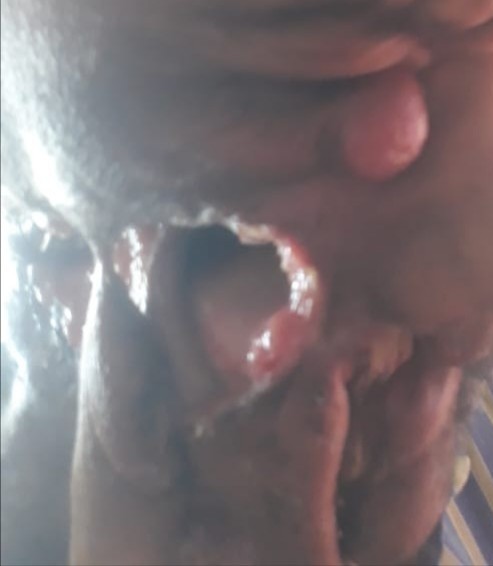
Oral Cancer : Treatment, Procedure, Cost And Side Effects What is the Oral Cancer? How is the Homoeopathic treatment done? Who is not eligible for the treatment? Are there any side effects? What are the guidelines during the Homoeopathic treatment? How long does it take to recover? What is the price of the treatment in India? Are the results of the treatment permanent? What are the alternatives to the treatment? What is the Oral Cancer? Oral cancer is defined as the abnormal growth of cells in any part of the lips or mouth. Most oral cancers are known to commence in the lips or mouth lining. This is the region where we find the flat cells also known as the squamous cells. Other names for this type of cancer are oropharyngeal cancer and oral cavity cancer. There is a wide range of risk factors associated with oral cancer. This involves heavy alcohol consumption, smoking, having human papillomavirus (HPV), or marijuana usage. In case of lip cancer, exposure to UV light or tanning beds increases the risk for oral cancer. Symptoms include lumps or sores on the mouth region or the lips. How is the Homoeopathic treatment done? Mission Chronic Cure is a big platform where every doctor has a quality to handle such a critical cases. Doctor will take brief history of a patient and analysis the case properly. Homoeopathic doctor will find the Constitution of the patient, uncommon peculiar sign and symptoms. These types of sign and symptoms are very useful to find out the best homoeopathic remedy for the CANCER. Who is not eligible for the Homoeopathic treatment? Every age group can take Homoeopathic Treatment for the CANCER. Are there any side effects? There are so side effects in any form. What are the guidelines during the Homoeopathic Treatment? It is very important that the patient receives proper follow-up care during the treatment. Patient may do a blood test, x-rays or a complete physical examination. Patient also urges to strictly stop the usage of tobacco and consumption of alcohol to prevent recurrence of oral cancer. How long does it take to recover? It is depends upon patient to patient or immunity of the patient. Sometimes will take two to three months or sometimes gives quick results. What is the price of the treatment in India? The cost of treatment ranges from Rs. 2500-3500/- including Consultation + Medicines for one month. Courier charges are not including. Are the results of the treatment permanent? No the results of the Homoeopathic treatment for oral cancer are not permanent as the cancer cells can return in case they were not detected earlier. But the recovery rate is higher than the Allopathic treatment. What are the alternatives to the treatment? Alternative treatments for oral cancer include using herbs like turmeric (curcuma longa), mint, thyme, basil and green tea. The usage of these herbs will provide benefit in easing the symptoms associated with oral cancer. Surgery followed by a chemotherapy or radiation therapy are the alternate treatment. If you or a loved one has any type of CANCER suggesting Mission Chronic Cure (Advanced Homoeopathic Centre) at 8743859744 to schedule an appointment soon.